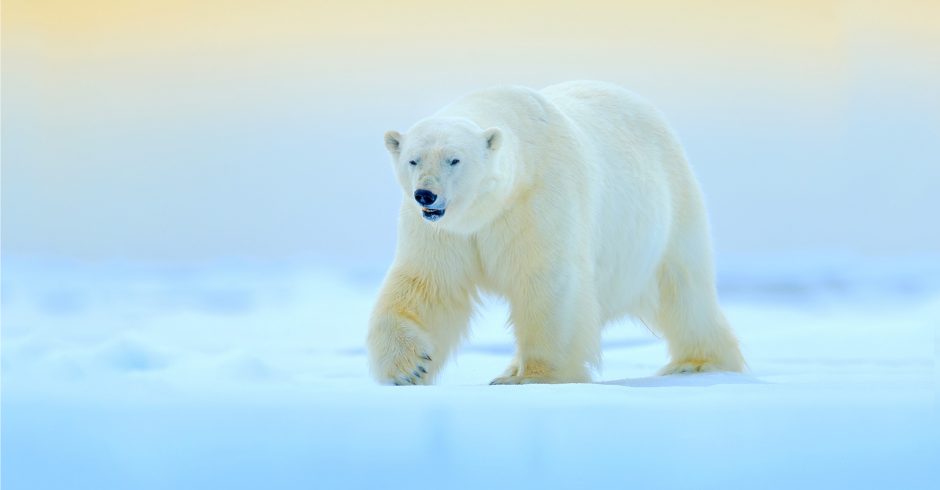
The Best Lens for Polar Bear Photography
With so many choices out there for the average camera platform, prepping for a polar bear photography adventure may seem a bit daunting. However, understanding the conditions and range of photographic opportunities will simplify this greatly. Plus, the new zoom ranges of modern mirrorless lenses enable not just a great amount of variability, but also superior telelphoto within a smaller-than-ever package.
Let’s dive in…
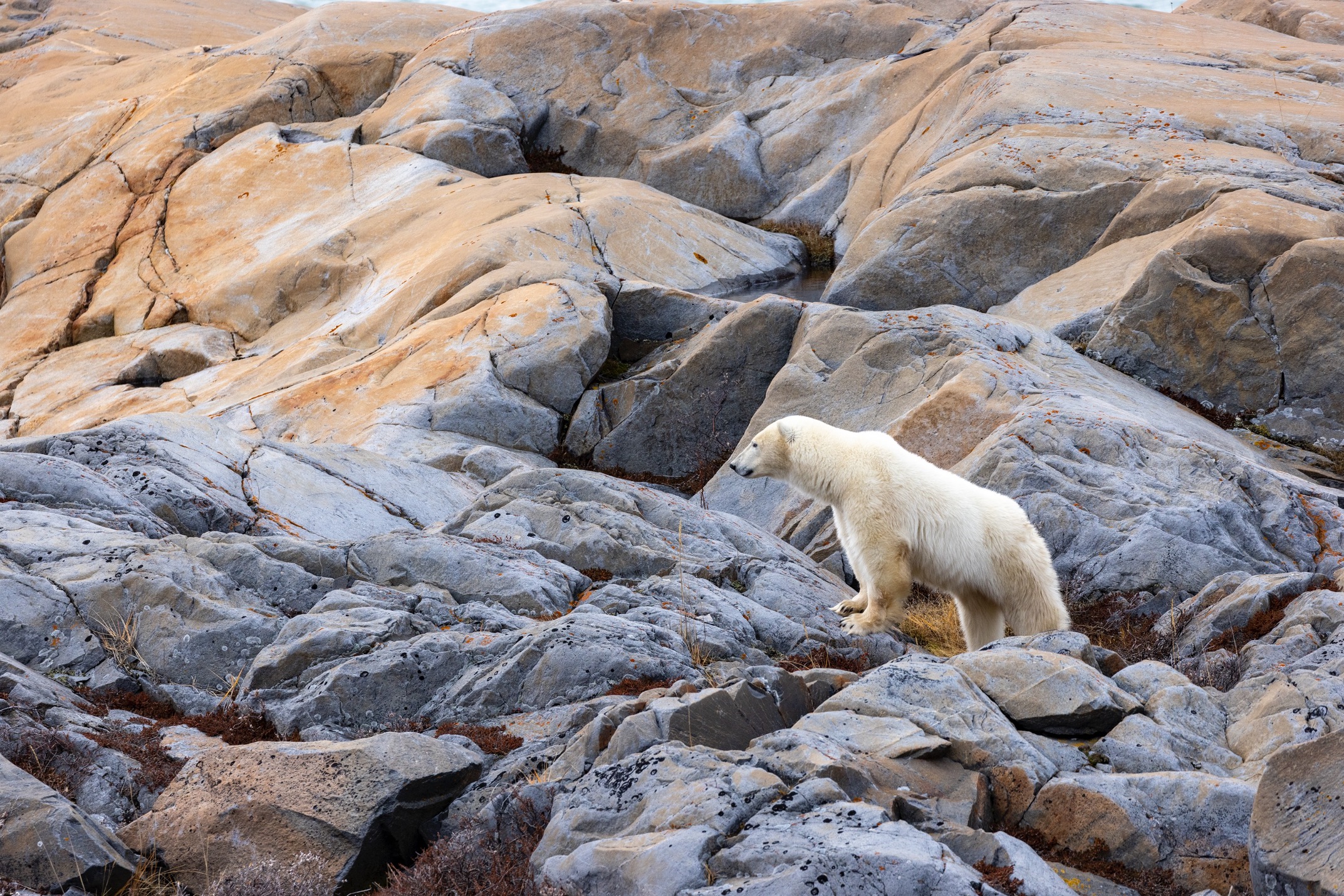
Why a Zoom “Range” is So Important
Polar Bear photography can present opportunities at a variety of distances. While normal “super telephotos” with fixed ranges (i.e., prime lenses) are often the go-to for professional wildlife photographers, a new class of super telephotos is emerging that not only are becoming the go-to for the pros, but are smaller, lighter, and more cost effective. They are now well within range of hobbyists and serious amateurs, compared to the big telephotos of yesteryear.
When we talk about “zoom” we’re actually referring to the range between your minimum and maximum telephoto length. It’s your “telephoto” that refers to the actual distance and reach that your lens gives you. In the point-and-shoot world, zoom usually refers to maximum telephoto distance, hence why it can be a bit confusing.
But the point here is that a good zoom range, i.e., the range between your min and max telephoto length, is key to great polar bear photography, as polar bears in places like Churchill, Manitoba can be at wildly different distances. An approaching bear may be spotted from quite a distance, say, 100 yards plus, while a resting bear could be mere feet away from you. And then you of course have everything in between.
Thus, for example, a 100-400mm is more versatile and better than a 200-400mm.
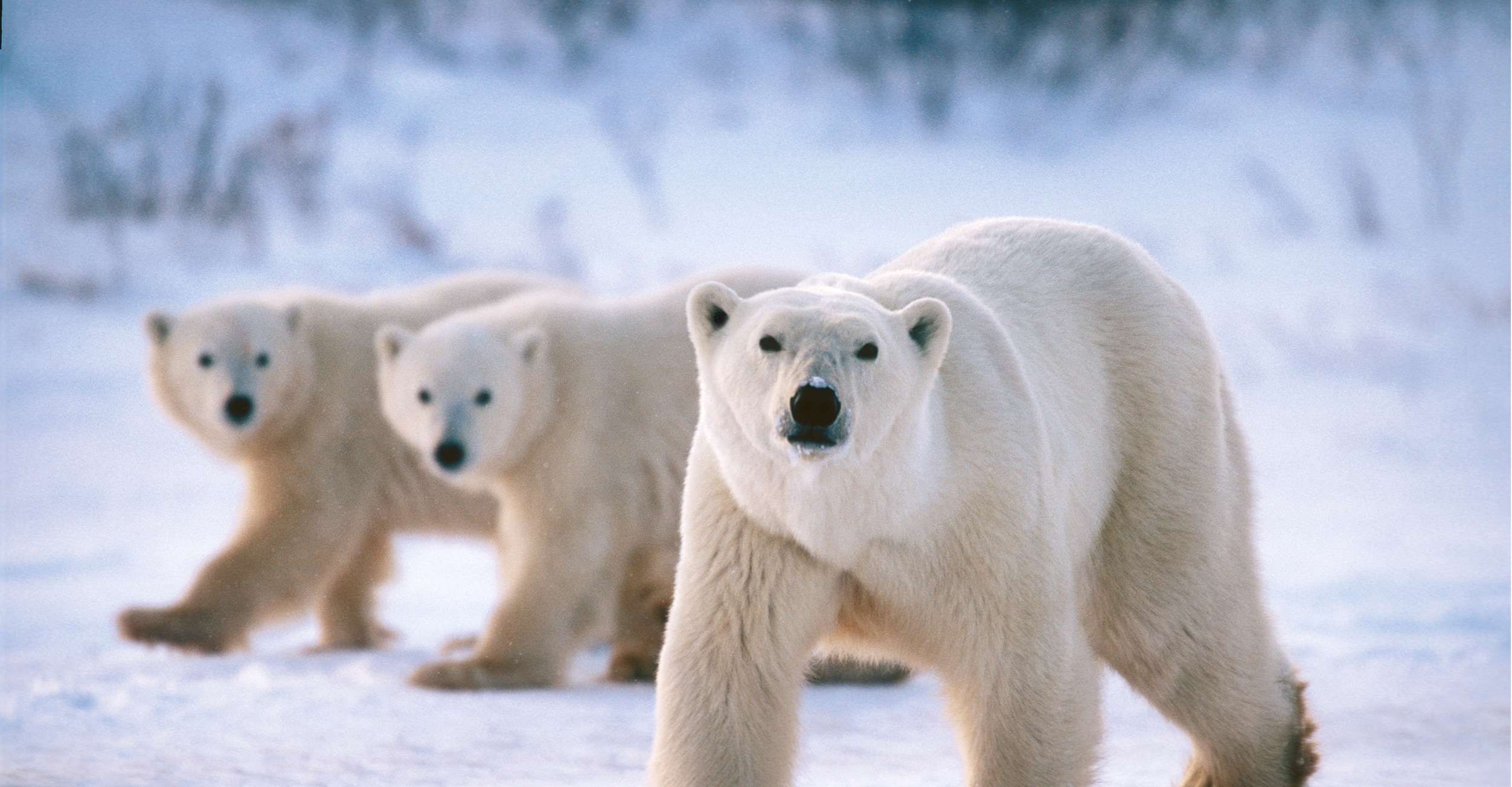
A Solid Maximum Focal Length
This refers to the distance that a lens can reach, magnifying the subject to “bring it closer” to you in the frame. For a 70-300mm lens, the maximum focal length is the 300mm…which is equivalent to something around a 6x “zoom” by normal point and shoot standards.
For great polar bear photography, we must also consisder the rapidly developing standard out there with bigger and better zoom telephotos emerging over the last couple of years. With the mirrorless revolution, lenses have more telephoto power while staying the same size as their previous counterparts, or even lighter and smaller, making them easier to hand hold while photographing bears.
Thus, while a 70-300mm and 100-400mm was at one time the gold standard, that standard has shifted. Now we think of the 100-500mm, 200-500mm, 200-600mm and 150-600mm lenses as being the primo wildlife lenses and polar bear photography is no exception.
With the advent of these new lenses, 500mm and 600mm is commonplace and deemed best for wildlife photography.
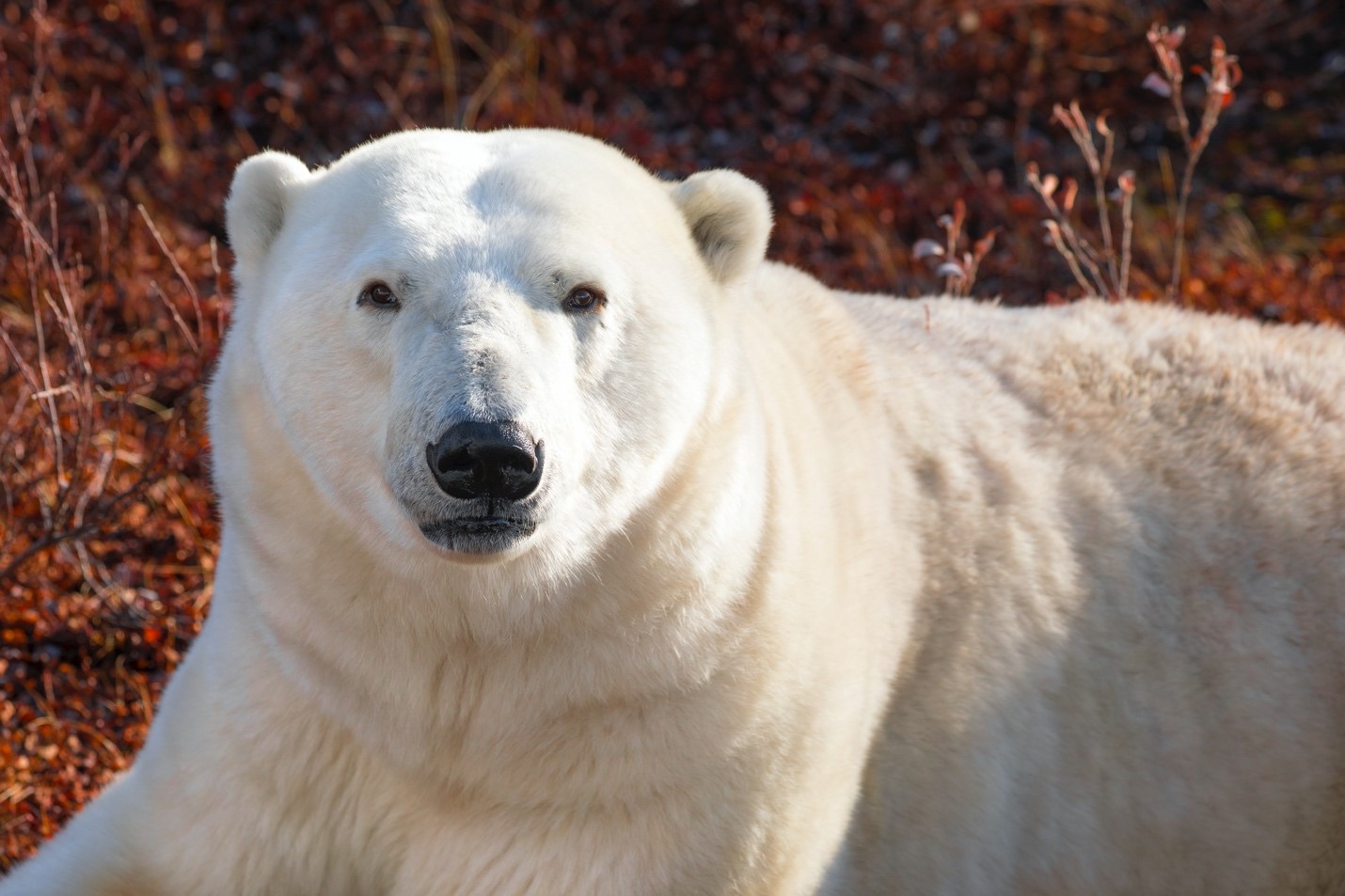
Considering Aperture
The aperture of your lens is the final consideration—the f/number—and is a key component to wildlife photography, polar bears included.
The smaller the “maximum” aperture (the smaller the f/number) the more light the camera lets in. This is great for those cloudy days on the tundra when you need to photograph fast moving subjects. Sparring polar bears come to mind, but so do arctic foxes which are almost always on the move.
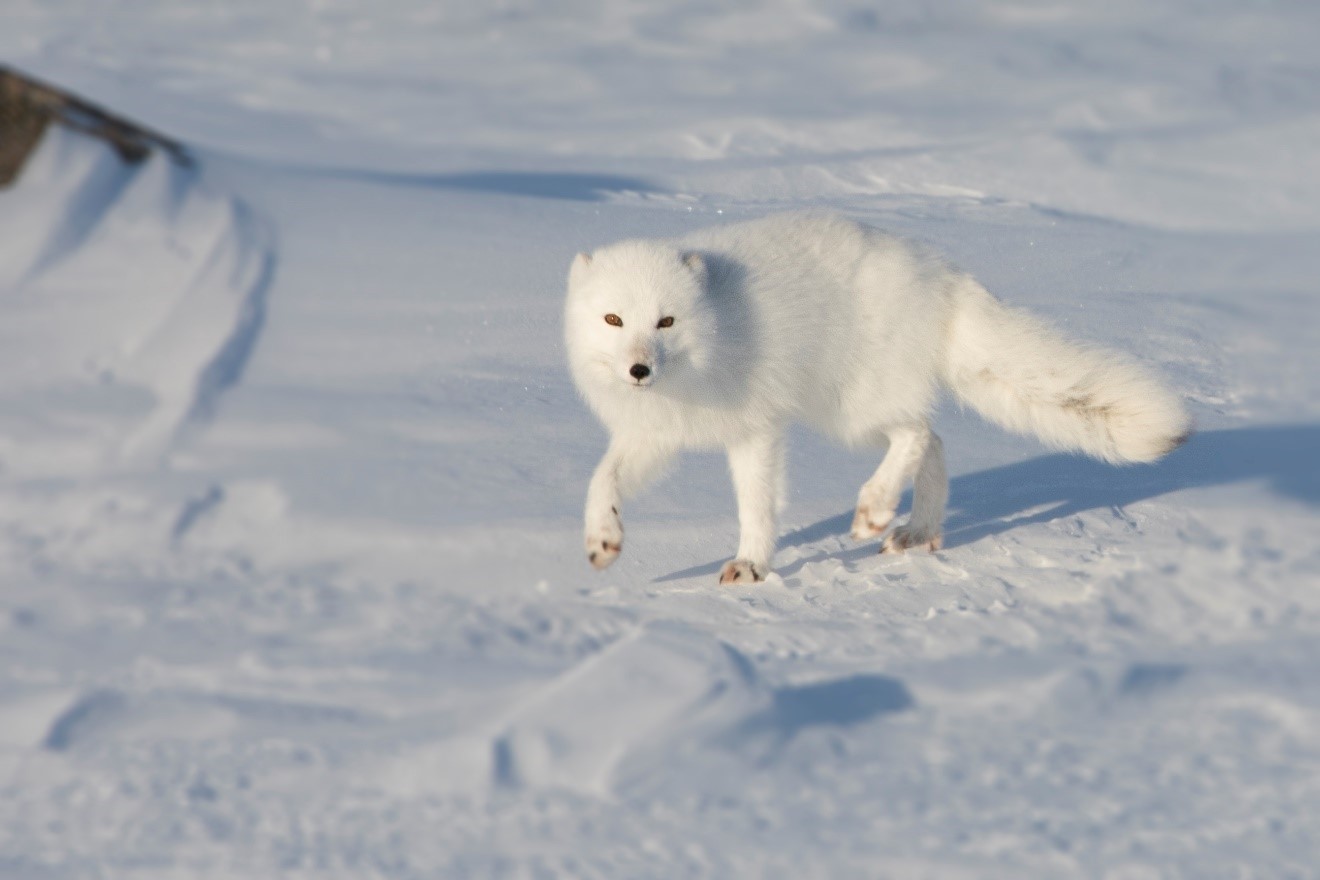
Here is where having your cake and eating it too is difficult. While you want a big range, and a big maximum, you ideally want the smallest f/number possible. However, as these lenses expand in their own telephoto capabilities, it comes at a cost. Some of this is a financial cost (yes, the more telephoto power and more versatile your lens is, usually the more money it will cost). Some of this is a hit in your aperture.
For instance, on Canon’s new flagship wildlife zoom telephoto, the 100-500mm, the aperture range is f/4.5 to f/7.1. F/7.1 is relatively high for an aperture rating, and it lets in nearly 1/4th of the light that an f/4.5 does, so we must rely on higher ISOs in our cameras to compensate. Fortunately, with these newer mirrorless cameras, the sensors are doing better and better with “high” ISOs.

Putting it All Together – What is the Best?
While different photographers often have different styles and different priorities, you can’t argue with the game-changing possibilities brought forward with the “new class” of zoom super telephotos hitting the markets these days.
My recommendation, if possible, is to stick with your camera’s brand platform. That is, if you are a Nikon photographer, stick with Nikon lenses, Sony for Sony, Canon for Canon, etc. Thus, each brand will have slightly different lens offerings in this realm. For instance, Sony’s more versatile zoom telephoto is the 200-600mm, while Nikon’s is the 200-500mm and Canon’s is the 100-500mm.
While each of these takes a hit in aperture, there are tools today that compensate for this both in-camera and in-post. For instance, the loss of light at f/6.3 and f/7.1 can easily be compensated with a higher ISO, with now minimal effect on photo quality (within reason, of course). And the loss of bokeh (background blur) from these higher f/numbers can be compensated with some digital processing and “adding” in blur to the background in post-processing.
So, these new super zoom telephotos are the clear winners in my book.
A Final Note on Quality
One thing you may notice right off the bat is that each of these camera platforms I mention, as well as those I don’t mention, have other zoom telephoto lenses that are worth considering. For instance, Canon is set to come out with a new, coveted pro-level 100-300mm f/2.8 lens. And Nikon has a sensational 200-400mm f/4 (a very low f/number for that range).
However, I’ve purposefully avoided considering this class of lenses, as they are indeed at professional level, having price tags of $10,000 and upwards. For folks that are of the most discerning level of quality and sharpness, these lenses do stand out. However, they are in a league of their own and many professionals don’t even shoot with them, as they’re significantly bigger, bulkier, and of course pricier than other options out there.
If you’d like guidance on these cream of the crop lenses, please feel free to message me below!
I hope this article has been helpful and I hope that you are headed on a polar bear photo adventure sometime soon! The feeling of photographing in the brisk arctic tundra and capturing moments so few people are lucky enough to have is enthralling on every level. Enjoy it, cherish it, and capture it!
All the best,

Court
2 Comments

John
July 29, 2024 at 3:06 pm

Court Whelan, Ph.D.
August 2, 2024 at 11:11 am
I think I hit you with this question previously but didn’t get a response.
Given the new restrictions in Svalbard (maintain 500 yards distance from polar bears) is the Sony 600mm f/4 with a 1.4 TC (f/5.6) going to be significantly better than the Sony 200-600 f/5.6-6.3 with the TC (f/9 @ 600mm)? I think I can buy, and then sell, the 600 and spend no more than what would be the rental cost for two weeks.
Hi John, in short, yep, the 600mm f/4 will be better. This is primarily because of the higher quality glass which means that small objects in the scene will be sharper and you’ll have WAY more cropping ability. The 200-600 is the ultimate in versatility, but if you know you are going to be photographing to crop later, go for the highest quality (and fast shutter speed with low ISO) possible. Best of luck out there!